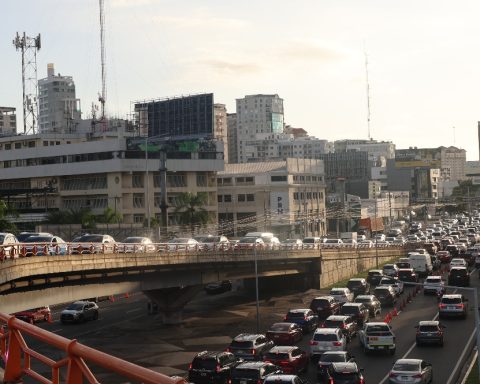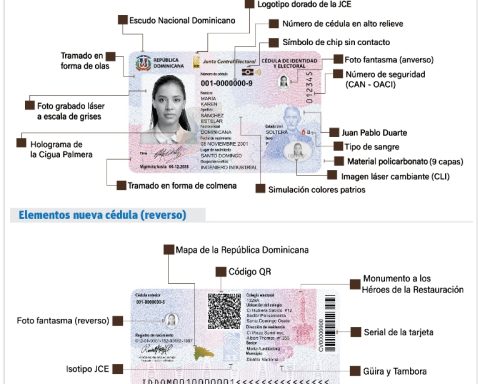The pension system Dominican in general and individual accounts in particular “suffer from severe problems”, it is affirmed in a critical report published this July by the Economic Commission for Latin America and the Caribbean (ECLAC).
The document also indicates that the administration of the system by pension fund administrators (AFP) “shows very little competence”.
In addition, the replacement rate, which is the percentage of income in retirement compared to previous income as an active worker, is the lowest in the region: 22.8% estimated by the Organization for Economic Cooperation and Development (OECD) in 2010 and 27% for an academic study in 2020, about half the minimum of 45% set by the International Labor Organization (ILO).
The analysis describes that the Dominican system “is very fragmented”, with multiple programs separate from the general one, and cites among these those of state officials, of autonomous and decentralized entities, most of the officials of the municipalities, the officials of the Central Bank and of the Reserve Bank, the Armed Forces and the National Police, the judiciary, legislators, professors, the Autonomous University of Santo Domingo, former employees of the dissolved Dominican Institute of Social Security (IDSS) and doctors.
“The vast majority of these programs have universal coverage, as well as more generous access conditions and benefits than the general system, and are actuarially unbalanced despite the fact that they receive strong fiscal subsidies,” it is observed in the report entitled “Individual Capitalization Pensions in Latin America: effects, reforms, impact of COVID-19 and policy proposals”, prepared by the consultant and professor Carmelo Mesa-Lago.
“The private system is exempt from social solidarity and gender equality, and the State has not taken measures to improve these principles as other countries have done”Published by ECLAC
It stands out that the coverage of the Economically Active Population (PEA) by contributory pensions in 2017 was 38%, among the five lowest of the 10 countries with private systems or that maintain individual capitalization, while that of the older adult population was 16% for contributory pensions in 2019, the lowest among these countries, which is attributed to the fact that it is the only one that has not implemented the non-contributory pension.
“Both coverages were less than the minimum 50% established by the ILO,” observes the report.
The document questions that, on the contrary, the Executive Branch has granted “numerous” “meritorious” non-contributory pensions in the public sector.
About the contributors
The study published by ECLAC indicates that the proportion of affiliates who actively contribute decreased from 66% in 2003 to 46% in 2019, and 50% of the insured contribute below the minimum wage.
“The private system is exempt from social solidarity and gender equality, and the State has not taken measures to improve these principles as other countries have done; system fragmentation and low coverage are additional headwinds,” she notes.
About the AFPs
The report highlights that while there are seven AFP, there is a growing trend towards concentration in the two largest. Also, annual affiliate transfers were only 2% in 2019 and profits as a proportion of net worth doubled between 2007 and 2019, to 38%, the second highest among the ten private systems.
Remember that a 2020 law eliminated the administrative commission on the balance and reduced the commission on the return from 30% to 0.75% in ten years. “Despite this, there is a strong debate about whether this law will increase or reduce the income of the AFP”, he observes.
Regarding the accumulation of the pension fund, the report indicates that in 2004 and in 2019 it was the lowest among the ten systems, both in absolute terms and as a percentage of gross domestic product (GDP).
heritage investment
At the time the report data was collected, 78% of the pension fund was invested in government debt (the second highest percentage) and 11% in bank deposits, also resulting in the second highest concentration in two instruments (89 %). “There was no investment in domestic stocks or foreign instruments,” he observes.
“There is a debt of 8,651 million dollars for non-payment of employers equivalent to 82% of the pension fund accumulated in individual accounts, but the 2020 law waived the interest charges on the debt for delays to delinquent employers.”
Remember that a law of February 2020 established that, as of September of that year, the review and study process for the modification of Law 87-01 that creates the Dominican Social Security System would begin, which has generated several reform projects.
He mentions that one of them, submitted in October by a group of deputies, constituted a re-reform of the current subsidized system, turning it into a mixed one, with a mandatory public pillar and a voluntary pillar of individual accounts managed by entities of a multiple nature (private, public or mixed). In addition, he stipulated improvements in most of the principles of social security: new entrants to the labor market would have to enter the mixed system, including all state officials, the armed forces and the national police.
What is recommended to improve?
The report recommends stipulating in the law the compulsory affiliation of informal groups, implementing the subsidized regime and resuming the extension of the pension, something that could be evaluated for its expansion through taxes, especially on income.
Also, make a reform that integrates and equates the conditions and benefits of the separate schemes to the general system and that are fully financed by the insured without tax subsidies. “If this is not feasible, at least the fiscal subsidies to the separate programs should be eliminated, which would require a harsh parametric reform.”
Regarding the years of contributions required to retire (together with the arrival at the statutory age), he indicates that they could be increased in some countries where the period is very short and, by contributing more years, the replacement rate would be increased, but in others countries the period is very long and considerably reduces the probability of earning a pension.
“The period is too short in the Plurinational State of Bolivia, but adequate in Uruguay, while it is very long in the Dominican Republic. This has a period equal to that of Uruguay, which has a much higher formal EAP that allows the formally insured contribute during the period, while in the Dominican Republic the majority of the EAP is informal, which limits the probability of contributing for such a long period,” he says.
It also indicates that the Dominican Republic should issue the so-called “recognition bond” and increase the salary contribution.
The report explains that between 1981 and 2008, eleven Latin American countries implemented structural pension reforms. These adopted three models in the years of implementation. One is the substitute, which closed the public system and completely replaced it with the private one, as is the case in Chile, 1981; Bolivia, 1997; Mexico, 1997; Salvador, 1998; and Dominican Republic, 2003.
The others are the mixed one, which kept the public system as a pillar and added a second private pillar (Argentina, 1994; Uruguay, 1996; Costa Rica, 2001 and Panama, 2008); and parallel, which maintained the public system and added the private system, both competing with each other (Peru, 1993 and Colombia, 1994).


















